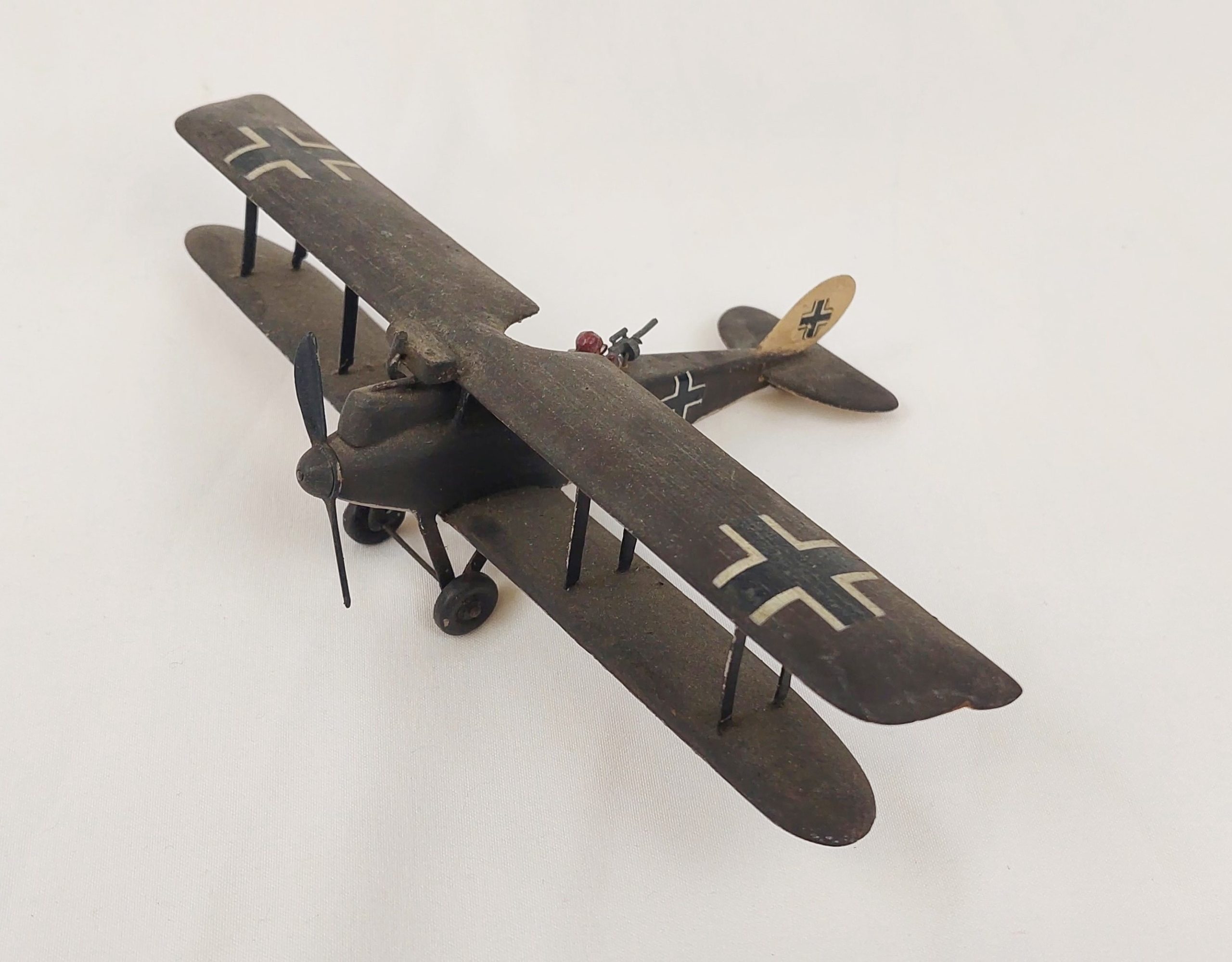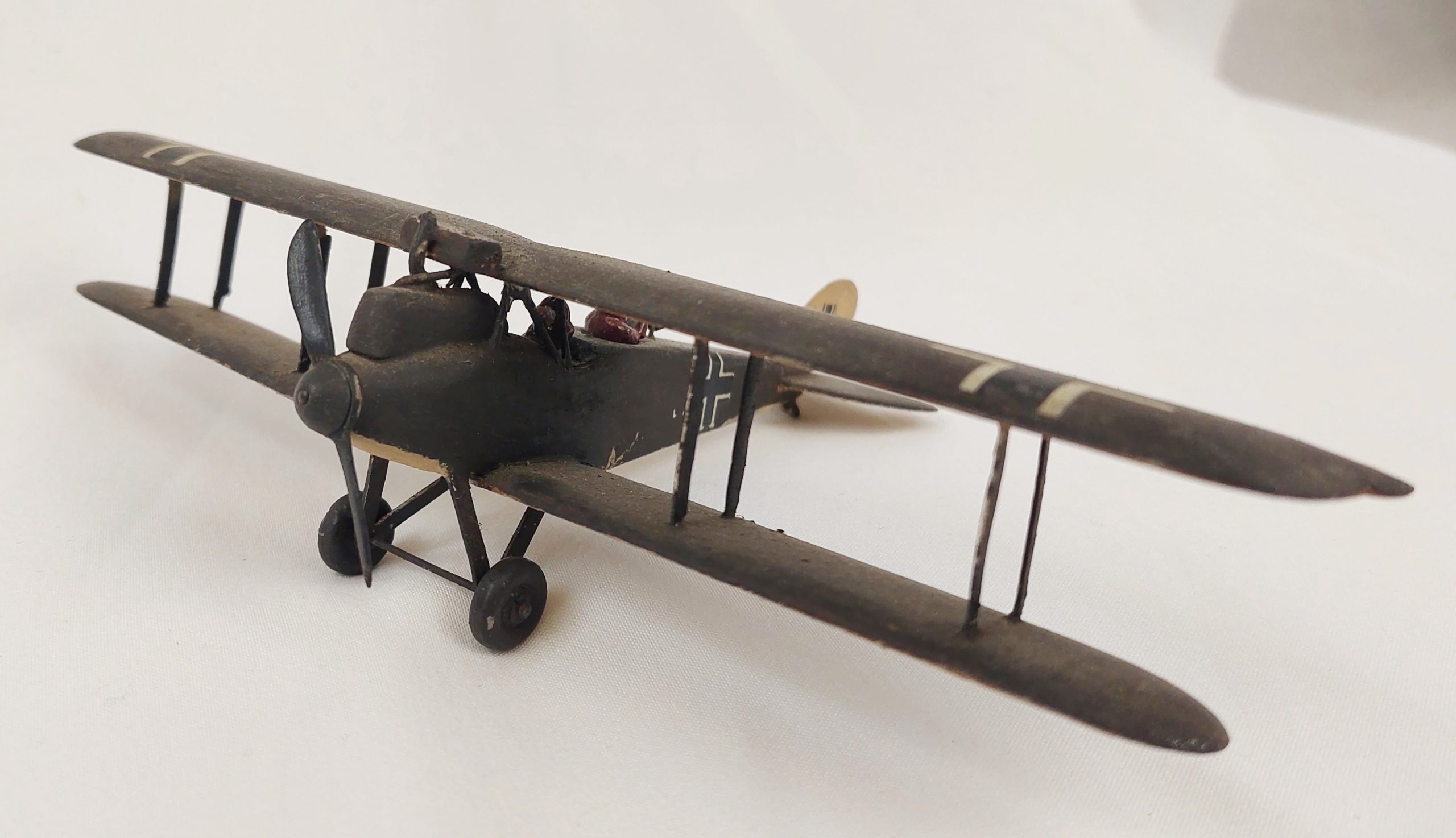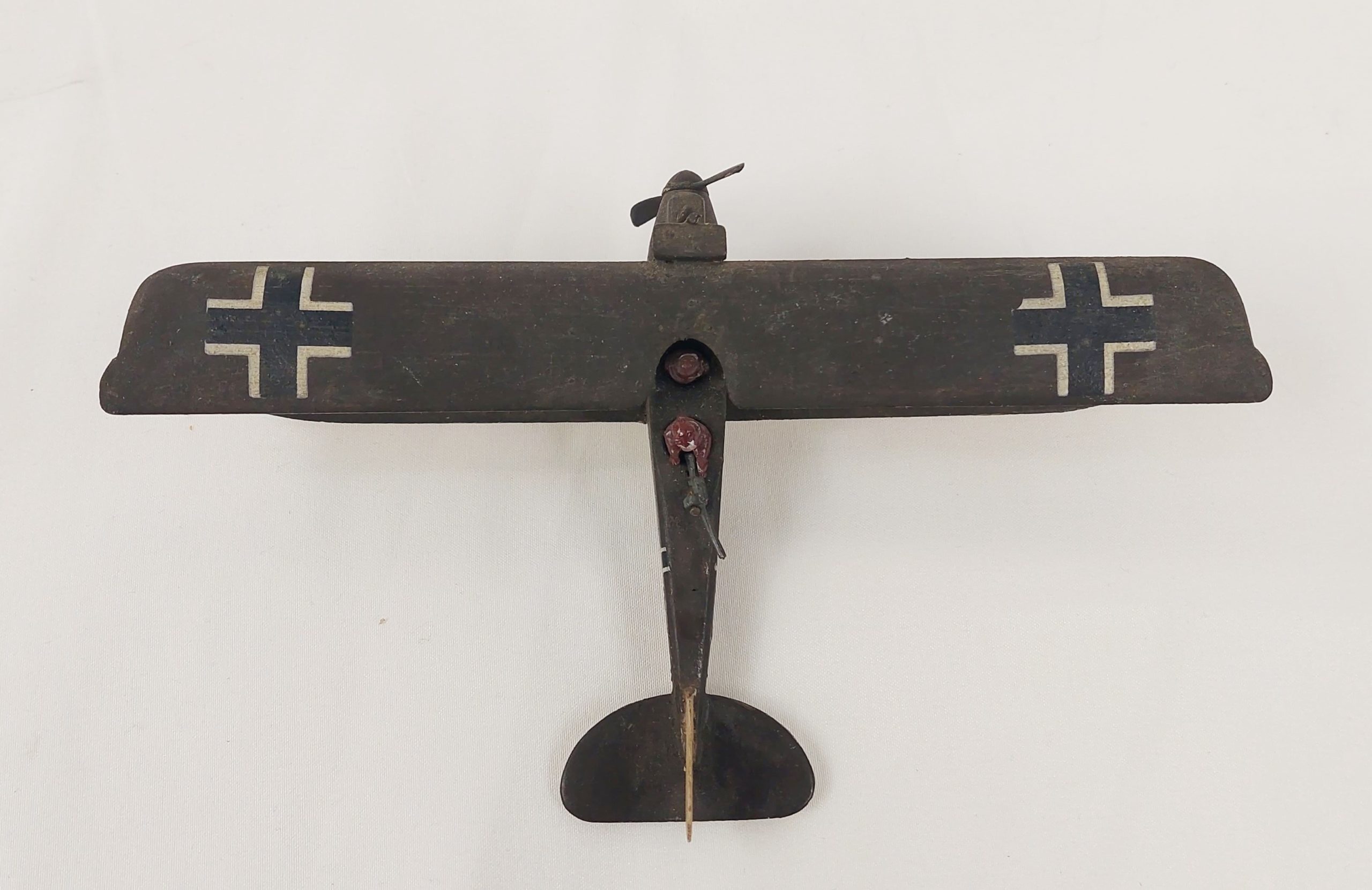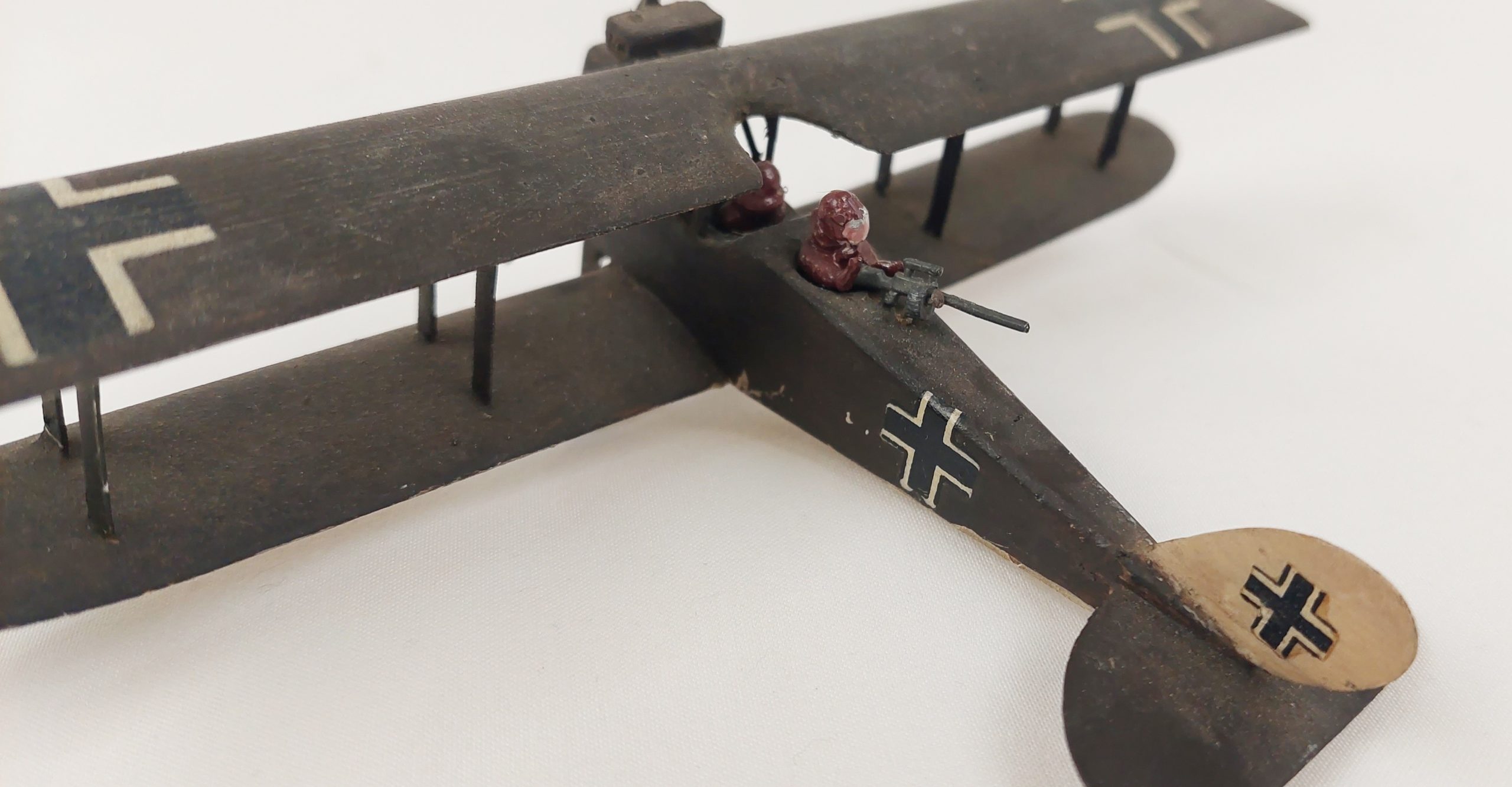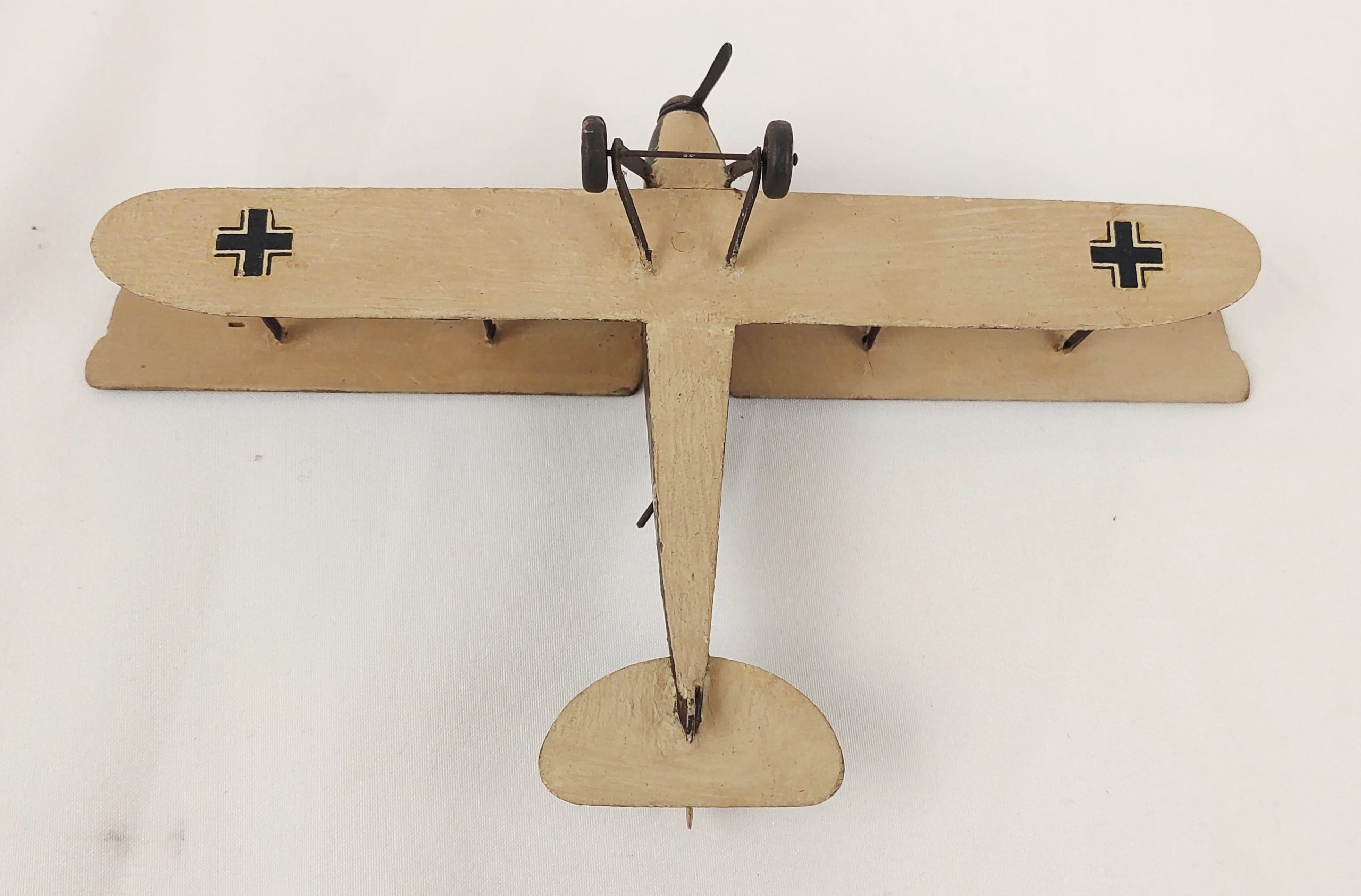~ 1930’s Givejoy Toys Skybirds Model Of WW1 Albatros C III Fighter Aircraft ~
The Albatros C.III was a German two-seat reconnaissance and artillery spotting aircraft used during World War I. It was a part of the Albatros C-series, which included various reconnaissance and observation aircraft. Here’s a brief history of the Albatros C.III:
Development:
-
Origins: The Albatros C.III was developed by the Albatros Flugzeugwerke during World War I. It was designed as a successor to the earlier Albatros C.I and C.II reconnaissance aircraft.
-
Design: The C.III featured a biplane configuration with a crew of two, typically consisting of a pilot and an observer/gunner. It had a wooden frame with fabric covering and was powered by a variety of engines, including the Mercedes D.III inline-six engine and the Benz Bz.III rotary engine.
Performance:
-
Speed and Range: The Albatros C.III had a top speed of around 98 mph (158 km/h) and a maximum range of approximately 270 miles (435 km), making it suitable for reconnaissance and observation missions.
-
Armament: The aircraft typically carried a defensive machine gun for the observer/gunner to engage enemy aircraft, and it could also carry a small bomb load for offensive operations.
Operational Service:
-
Reconnaissance: The primary role of the Albatros C.III was reconnaissance. It was used to gather vital information about enemy troop movements, artillery positions, and other valuable intelligence.
-
Artillery Spotting: The C.III was also employed for artillery spotting duties. Observers in the aircraft would communicate with ground artillery units to adjust fire onto enemy positions accurately.
-
Longevity: The Albatros C.III entered service in 1916 and remained in use throughout World War I. It served on both the Western Front and the Eastern Front.


